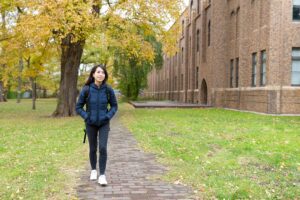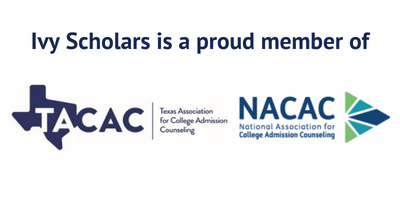Top Public Schools
There are a number of free, high-performing, specialized public schools in New York that are extremely difficult to get into; many of the best ones have acceptance rates below 10%. Admission to most of them is based solely on a single test called the Specialized High Schools Admission Test (SHSAT), which is taken by 8th and 9th graders and offered in the fall. All students are ranked by their composite score on the SHSAT, and then one by one they’re each assigned to the top school on their list that still has openings until all vacancies are filled. Many of these schools are STEM-focused, but others excel at liberal arts or creative arts. Each year, approximately 25,000 8th graders from New York take the SHSAT, but only about 5,000 of them (20%) are admitted to a specialty high school. These specialty schools are similar to magnet schools in that they offer advanced curriculums and attract students from a wide variety of surrounding neighborhoods, but magnet schools have other ways of filling their seats, including conducting student interviews and even resorting to lottery systems.
Pros and Cons
The upside of these schools is that they provide a rigorous academic program, specialty courses and opportunities you wouldn’t find anywhere else, a collection of highly motivated students, fewer “problem” students that plague public schools, and excellent placement at top universities… all for free. The downside to these schools is that because of the strict nature of their admissions (based purely on a single test score), they tend to be sorely lacking in ethnic diversity, at least by New York City standards. Most schools skew heavily Asian (65-85%), and have relatively few Hispanic or Black students. They do, however, feature considerable economic diversity, and roughly 50% of students come from low-income homes. Because these are public schools in a cash-strapped city, many of them lack proper funding for basics like extracurricular clubs, sports teams, and school facilities. And depending on where you live, you might have to commute over an hour.
Here are some of the top-ranked specialty public high schools…
#1: Queens High School for the Sciences at York College (Jamaica, NY)
“Queens” is arguably the top-performing public school in New York – with an average SAT of 1440 and an average ACT of 31 – but it’s not for everyone. It’s a very small, science-focused high school with only 500 students that takes up one “cramped” floor of a building on the campus of York College, a City University of New York (CUNY) school. Students occasionally have access to the resources at York College, including science and computer labs, theater, gym, and pool. Many students conduct scientific research with York College professors. The school is 95% minority (85% Asian), and 65% of students come from low-income households. It’s also about 60% female, 40% male. Unfortunately, there aren’t many opportunities to play sports. Some students and parents complain about chronic budget cuts, high teacher turnover rates, and poor facilities. In some regards, Queens offers a stellar STEM curriculum, but not much else.
#2: Stuyvesant High School (NY, NY)
“Stuy” is a very large and highly competitive public high school with 3,500 students located in a beautiful, 10-story building with large windows that faces the Hudson River in downtown Manhattan. Of the approximately 25,000 8th graders who take the SHSAT each year, only about 850 are admitted to Stuy, for an acceptance rate of about 3%. The school is renowned for its academics; the average SAT is 1500, and the average ACT is 33. Stuy offers plenty of AP courses, but they’re reserved for the students with the highest GPAs, so you may not always get the courses you want. Stuy offers a wide variety of extracurricular clubs and sports teams, and there’s even an Olympic-sized pool. The culture is known for being “fast-paced,” “hyper-competitive,” “extremely rigorous,” and even “toxic.” Some students complain about the excessive workload, late-night study sessions, and pervasive stress. About 70% of students are Asian, and 15% are White. Approximately 50% come from low-income households. The school also boasts a strong music program and one of the most popular events is the annual Sing! event, where the whole grade collaborates to put on a show. For a large, bustling public school, it’s remarkably “clean and quiet.” Overall, it’s an excellent school in a beautiful building, but it’s intense, stressful, and competitive.
#3: High School for Math, Science, and Engineering at CCNY (NY, NY)
Like Queens High School, “HSMSE” is a very small, high-performing STEM school of 550 students located on a college campus, in this case the City College of New York (CCNY) in Harlem, just North of Columbia University. Unlike most specialized schools, HSMSE is remarkably diverse; about 30% of students are White, 30% Asian, 15% Hispanic, and 10% Black. Although admission is primarily based on the SHSAT, about 20% of students are admitted through affirmative action, resulting in much more diversity. The only two languages offered are Spanish and German, and 70% of students study German. Beginning junior year, students must choose a concentration: 1) engineering, 2) math, or 3) medical research. The small cohort that’s accepted to the medical research concentration, which is run in partnership with Mount Sinai Hospital, travels regularly to the medical center to participate in laboratory and clinical internships. The average SAT is 1430, the average ACT is 32. Many classes are 90 minutes long and staggered every other day to help students avoid homework overload.
#4: Bronx High School of Science (Bronx, NY)
“Bronx Science” is a large, internationally-recognized STEM school with 3,000 students. It’s frequently ranked as one of the Top five STEM schools in the nation (public or private), and is the only specialized NYC high school with its own campus, which is about a 30-minute subway ride from midtown Manhattan. Bronx Science has counted 132 finalists in the prestigious Regeneron Science Talent Search, the largest number of any high school, and has produced the most Nobel laureates in science of any secondary school in the world. Many students exhaust the extensive AP curriculum, so Bronx Science offers several “post-AP” classes like genetics, multivariable calculus, and organic chemistry. Because of the school’s large size, it offers smaller seminar classes after school called “small group instruction” (SGI) so students can review material and get to know their teachers in a more personalized setting. The average SAT is 1460, and the average ACT is 33. Students and parents laud the “extraordinary academics,” “wide variety of courses,” and “first-rate extracurricular clubs,” but also bemoan the “rigorous coursework,” “hyper-competitive atmosphere” and fixation on elite college admissions.
#5: Staten Island Technical High School (Staten Island, NY)
Students from Staten Island and Brooklyn may be interested in attending “SITHS,” a STEM-focused magnet school located on Staten Island (the commute is too far from Manhattan). SITHS is a mid-sized high school with 1,400 students, and it occupies 3 stories of a building. The school is unlike other schools in several regards. First, Russian is the only foreign language available, and it’s required of all students. Second, students take gym class every day. Third, while the school emphasizes rigorous STEM courses, there’s also a heavy emphasis on the arts, and there’s even a full-fledged TV recording studio where students can learn TV production. The school takes mental health seriously, and there’s a comfort dog named “Sheldon” who makes himself available to students. The school is 63% Asian and 30% White; 50% of students are economically disadvantaged. Work-based learning is big at SITHS, and about 50% of students participate in paid internships during the school year and over the summer. The average SAT is 1440, and the average ACT of 33. Admission to many AP classes is competitive and determined by GPA. Students describe the school as “nerdy” and “rigorous” with a “small, tight-knit, supportive community,” but also “grossly under-funded.”
#6: The Brooklyn Latin School (Brooklyn, NY)
“TBLS” is a throwback to the first public schools in America, and is modeled after Boston Latin, the oldest public high school in the nation (and a longtime “feeder school” for Harvard). Unlike many other STEM-focused specialized schools in NY, Brooklyn Latin focuses on the humanities, and is the only specialized school in NY that has an IB curriculum (there are no AP courses). The IB curriculum is a 2-year program that emphasizes student discussion, critical thinking, interdisciplinary education, public speaking, and extensive essay writing. The school is relatively small with only 850 students, and it shares a building with two other schools (Lyons Community School and Williamsburg High School of the Arts and Technology); some clubs and sports are open to students from all three schools. True to its traditional roots, Brooklyn Latin has a dress code: white shirts, neckties, and khaki pants for boys, and white shirts and khaki pants or skirts for girls. Latin is required for all four years. The school is somewhat more diverse: 48% Asian, 20% White, 13% Black, 10% Hispanic, and 60% are economically disadvantaged. The average SAT is 1360, and the average ACT is 31. Some students complain that the school feels “cramped” and that it’s woefully “underfunded,” and also that most of the clubs are academic, so there’s not a lot of variety for extracurriculars.
#7: LaGuardia High School of Music & Art (New York, NY)
Special mention must also be given to LaGuardia High School, a leading public high school for the creative arts with 2,500 students, located in an 8-story building adjacent to Lincoln Center in Manhattan. The school specializes in both academics and the arts and sends graduating seniors to both prestigious universities and conservatories. It is widely regarded as one of the best-performing arts schools in the nation and was the basis for the popular movie and TV series “Fame” back in the 1980s. Notably, LaGuardia is the only specialized high school in NY not to use the SHSAT as admissions criteria; instead, applicants are judged on a combination of their academic record and an audition. Students take a regular academic course load as well as two to three hours a day of their chosen art. They choose from a variety of AP courses, and also “major” in one art including: dance, drama, art, vocals, instrument, or technical theater. The school is reportedly 70% female and has a very large LGBTQ+ population. With up to three hours of homework a night and rehearsals after school and even during school vacations, sleep deprivation is a common complaint. The school also offers a full slate of athletic teams. Famous alumni include: Jennifer Aniston, Ellen Barkin, Adrien Brody, Timothée Chalamet, Sarah Michelle Gellar, Adrian Grenier, Al Pacino, Nicki Minaj, Awkwafina, Michael Che (SNL), Paul Stanley (Kiss), Liza Minnelli. The school is extremely diverse – 36% White, 22% Asian, 16% Hispanic, 10% Black – and about a third of students are low-income.
Top Private Schools
Competition for admission to the best private schools in New York is notoriously fierce, starting as early as kindergarten, but the top schools excel at sending students to the best universities in the country. In addition to cutting-edge facilities, private schools offer excellent teaching, small class sizes, rigorous academics, community service engagement, and even travel abroad opportunities – many things you’d never find at a public high school. Plus, you don’t have to be a resident of New York; you just have to live close enough (in say New Jersey or Connecticut) to make the daily commute. The Brearley School, for example, is an all-girls school on the Upper East Side of Manhattan that sent 28 students to Harvard in the five years spanning 2017-2021. Horace Mann sends a disproportionate number of students to UChicago and Cornell, and Dalton acts as a feeder school for Cornell and Brown. It’s important to note, however, that simply attending a top private high school doesn’t guarantee you admission to an Ivy League-caliber university; you still have to excel and find a way to stand out as an academic scholar and a peer leader. Families can expect to pay upwards of $60,000 per year for tuition, though financial aid is available.
Admissions
Unlike New York’s specialized public schools, where admissions are based solely on your SHSAT score, admissions to private schools is much more holistic. Applications typically include: 1) a preliminary letter of inquiry, 2) essay questions, 3) a school tour and student interview, 4) ISEE or SSAT scores, 5) school transcript, 6) teacher and guidance counselor recommendations, and 7) optional materials such as work samples. Many private schools are K-12, and many students start off in kindergarten and stay with the school all the way through high school graduation. Admissions is very competitive no matter when you apply, but by far the best times to apply for entry are kindergarten, 6th grade, or 9th grade. If you try to apply for other grades, they have far fewer openings available. Students generally apply during the fall term of 8th grade, and most applications are due by November or December. The acceptance rate at the top schools ranges from 10-15%. Historically, private schools have given strong preference to legacy students and students who have siblings already attending the school (to make it easier for families to navigate drop-offs.)
The Ratings
One highly over-simplified (but still useful) metric for evaluating private high schools is to calculate how many graduating seniors matriculated at the Top 3 universities (Harvard, Princeton, and MIT) over the three-year period 2018-2020. Below is a listing of the Top 10 schools, but bear in mind that these are all excellent schools deserving of consideration. They all send a disproportionate number of graduates to elite universities every year, so ultimately the “best school” is the one that’s the best fit for you. Also, keep in mind that larger schools should, by definition, send more graduates to top universities each year.
#1: Horace Mann (Bronx, NY)
Horace Mann is one of the largest private high schools in New York with 700 students, which partially accounts for why so many seniors were accepted to the Top 3 universities. Horace Mann skews heavily White and Asian: 60% White, 20% Asian, 6% Black, 4% Hispanic. The average SAT is 1437, the average ACT is 32. Admission is selective with decisions based on recent grades, an interview, and the candidate’s score on either the ISEE or SSAT. The largest point of entry is in sixth grade (the middle school), with between 50 and 55 places available each year. In the ninth grade, 40 to 45 additional students are enrolled. Tuition is $62,000.
#2: Trinity School (New York, NY)
Trinity is a top-rated Episcopal school located on the Upper West Side of Manhattan with 450 students. It is often considered the best Christian school in NY, and the #2 STEM high school in NY. The average SAT is 1510, and the average ACT is 34. Trinity is renowned for the strength of its Classics program, and 40% of students study Greek or Latin. Many students start out together in the school’s kindergarten program. Students appreciate the top-notch academic curriculum, but many cite excessive stress and workload. The student breakdown is 55% White, 15% Asian, 8% Black, 8% Hispanic. Tuition is $58,000.
#3: The Dalton School (New York, NY)
Dalton is a small, prestigious high school with 450 students located on the Upper East Side of Manhattan, just a few blocks from Central Park. The school is famous for The Dalton Plan, a three-part customized learning program that includes “House, Assignment, and Lab” which helps each student establish a sense of community at the school, take responsibility for their own education, and engage in regular one-on-one instruction with teachers. The school is known for having incredible resources, and a wide variety of well-funded extracurricular clubs and sports teams. The school is much less diverse than some others: 61% White, 10% Asian, 11% Black, and 3% Hispanic. The average SAT is 1460, the average ACT is 33. Tuition is $62,000.
#4: The Brearley School (New York, NY)
Brearley is a very small, all-girls high school with 250 students located on the Upper East Side of Manhattan, and is consistently ranked as one of the top schools in the nation for helping its students get into Top 20 universities. It sends a disproportionate number of graduates to Harvard each year, though far fewer to other top universities like Yale, Columbia, and UPenn. It’s frequently ranked as one of the Top 3 all-girls schools in New York alongside The Chapin School and The Spence School. In addition to rigorous academics, sports play a huge role at Brearley. The school isn’t particularly diverse: 57% White, 17% Asian, 5% Black, 4% Hispanic. The average SAT is 1500, the average ACT is 34. Tuition is $61,000.
#5: Regis (New York, NY)
Regis is an all-boys Jesuit (Catholic) high school with 550 students located on the Upper East Side of Manhattan, and it’s unique in that tuition for all students is free (yes, you read that right: tuition is free for all four years). Students commute from all five boroughs (plus Westchester County and New Jersey) to attend this prestigious school, which heavily favors students from low-income families in the admissions process. As part of its Jesuit mission, the school not only prioritizes academics, but public service and community leadership as well. The school has a fairly large Hispanic population: 46% White, 24% Hispanic, 19% Asian, and 7% Black. As part of the admissions process, all applicants must submit a certificate verifying that they’ve been baptized, and it helps to get nominated from your current Catholic middle school if you attend one. Regis only accepts applications from current 8th graders seeking admission to the 9th grade. All applicants must sit for the Regis Scholarship Exam in November at Regis High School, which is a three-hour standardized test of English and math. The Regis Speech and Debate Society (the Hearn Society) is one of the best in the nation. The average SAT is 1480, the average ACT is 34. Georgetown and Boston University (both Jesuit) are far and away the most popular universities for graduating seniors, as well as Cornell, Fordham, and Notre Dame. Students reportedly commute to Regis from all five NYC boroughs, and some have commutes as long as 2 hours each way. There is a dress code. Tuition is FREE.
#6: Collegiate (New York, NY)
Collegiate is a small, secular, all-boys school with 200 high school students located in a modern 11-story building on the Upper West Side of Manhattan that features a gym and pool on the lower levels and a roof deck with a large recreation area. The school was founded in 1628 and is almost 400 years old (but has only been at its current location since 2018). All upperclassmen meet with their faculty advisor at least once a week. The average SAT is 1490, the average ACT is 34. Despite its excellent academic reputation and prestige, some students claim that Collegiate’s all-male composition fosters a climate of “toxic masculinity,” “homophobia” and “sexism,” while others feel that the school “toughens you up” in a good way for a competitive world that “doesn’t hand out participation trophies.” The school is not particularly diverse: 57% White, 16% Asian, 6% Black, 3% Hispanic. Tuition is $64,000.
#7: Rye Country Day (Rye, NY)
Rye Country Day is a posh private school with 400 high school students situated on a 35-acre campus in wealthy suburban Westchester County, which sits just across the Connecticut border. Each year it accepts about 35 freshmen and 5 sophomores, giving top admission priority to siblings. Overall, the school has a 20% acceptance rate. The school runs on a rotating 6-day cycle (Monday-Friday) so that students can add more electives and extracurriculars into their weekly schedule. Each year, the school accepts about a dozen upperclassmen into its Community Engagement Fellowship Program, which provides funding and support for independent community leadership projects over the summer. The school is predominantly White: 72% White, 7% Asian, 5% Black, 5% Hispanic. The average SAT is 1450, the average ACT is 33. Top choice colleges for graduating seniors include Cornell, UPenn, Brown, and Yale. Tuition is $52,000.
#8: The Spence School (New York, NY)
Spence is a storied, private all-girls school with 250 high school students located in the Upper East Side neighborhood of Manhattan, just one block away from Central Park. Its alumni include everyone from actresses Gwyneth Paltrow and Kerry Washington to Titanic survivor Madeleine Astor. While the school offers both standard and accelerated-level courses, they do not offer AP classes. The school is 56% White, 15% Asian, 9% Black, 5% Hispanic. The average SAT is 1500, the average ACT is 33. Tuition is $63,000.
#9: The Ramaz School (New York, NY)
Ramaz is a Jewish Modern Orthodox school with 250 high school students located on the Upper East Side of Manhattan and offers general studies taught in English and Judaic studies taught in Hebrew. Students commute to Ramaz from all over the NYC area, including New Jersey and parts of Western Connecticut. Part of the admissions process is an in-person interview, in which candidates will be asked to compose two essays on the spot: one in English, the other in Hebrew. No AP courses are offered. The school is 95% White. The average SAT is 1490, the average ACT is 33. Tuition is $35,000.
#10: The Chapin School (New York, NY)
Chapin is another top-ranked, all-girls private school with about 250 high school students (8th-12th grade) located on the Upper East Side of Manhattan. Unlike most private schools, Chapin accepts a large number of new students beginning in the 8th grade, though it accepts others in the 9th and 10th grades as well. Like many leading private schools, Chapin does not offer AP courses but rather offers advanced courses of their own design. Many Chapin students participate in study abroad programs in Perth, Australia, and Athens, Greece. Chapin shares an athletic rivalry with nearby Brearley School, and the two schools share some classes, after-school programs, and even a robotics team. The most popular universities are Cornell, UChicago, UPenn, Georgetown, and Boston University. Chapin is fairly diverse: 38% White, 21% Asian, 12% Black, and 9% Hispanic. The average SAT is 1410, the average ACT is 33. Tuition is $62,000.








